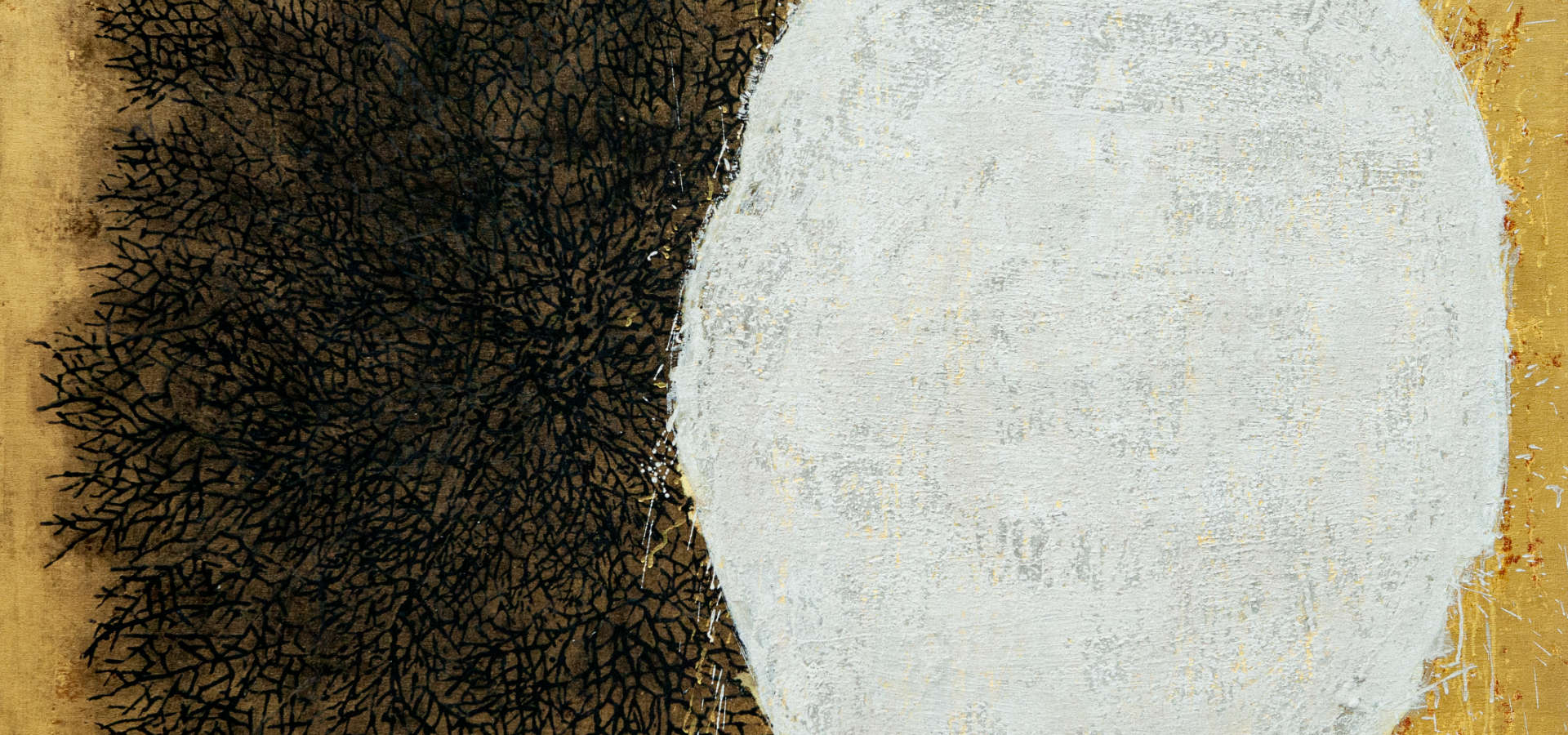GR Iranna: Floating Verses
G R Iranna, as an artist-migrant residing in the metropolis of Delhi for many years now, ruminates on Nature via the emblematic tree and its fertile terrain. The arboreal metaphor is a means of seeking connection to his distant village and farming family in South India, and a way to respond to larger ecological concerns.
The farmer invariably returns to the tree. For him, it is many things at once-–a source of shade and shelter, flowers and fruits, medicinal leaves and seeds, as well as a barren body providing wood and ash. The tree in India (and in other eastern cultures) is venerated for reasons more than mere sustenance; it has a sacred presence, a healing aura, and is historically considered a site for redemption. For instance, Buddha, a recurrent figure in Iranna’s oeuvre, attained Nirvana (enlightenment) under the Bodhi (fig) tree.
In Iranna’s recent series of works exhibited at the Aicon Contemporary in New York, we encounter a thematic shift in the artist’s tarpaulin-based, mural-sized paintings that bear testimony to his painterly prowess and artistic adventures. Moving away from expressive figuration and its existential concerns conveyed through the male figure, Iranna draws our attention to the tree-form and its orbit as the meditative focus. Tending his canvas to paint seasonal cycles, the tree is at times shown in dense bloom and at others barren and broken, scarred, burnt down and reduced to ash, often bearing marks of violence. The surface of the works is treated with layers of colour and encrusted and incised with powdered charcoal, brick and ash. The act of drawing directly with such mediums takes on a new form of expressiveness, a continuous energy moving through the delicately drawn tracery of breathing veins. Filling in fissures and veins, the tree is drawn as well as abstracted, often from an aerial view. The soft smudging of pigment creates a form which also verges on formlessness.
Seeing these works, one also recalls Iranna’s striking sculptures in bronze and object-based assemblages that stand apart in their conception. Particularly telling here is the image of an amputated tree trunk. It is created in bronze to appear like a log of wood with the raw textures of the bark intact, and displayed as resting against the wall. Matter and materiality are central to the artist’s practice, as he invents their use in unconventional and unpredictable ways. For instance, Iranna’s quasi-abstract paintings, executed against gold backgrounds and disparate leaks of colour, accentuate a sensual spread of pink blossoms. In another painting, a white flower canopy casting its shadow, oozes a fresh fragrance. Ageing leaves change colour from a dense gold to dry copper while turning fragile, or patches of silver foil appear as thin skin layers ready to escape their bodily flesh. In recent works, the perfect tree form is abruptly blocked by a precarious cloud passing over or the odd cement-like wall appears to partially obscure the metaphor’s soothing views. However, the deep blue painted surface in another painting draws us closer to observe traces of a disappearing tree.
Loosening his brush and using an airy and ethereal application of watercolour, in the modest-sized paper works, Iranna creates a sense of an unanchored floating world—unstable but arresting, suggesting a partially eclipsed, or an unseen world beneath the surface. One marvels at the transparent veils he creates through spills and drips of watercolour spelling the evanescence of time. Attendant to the distressed ecology of the earth, for Iranna, art remains a powerful tool for introspection and communication without the crutches of words. The fragile core of the earth, and the atrocities against Nature and humanity preoccupy the artist’s mind as he continues to resurrect the poetics of beauty. His works remind us of the exigent need for gentle care and restoration of a fractured world.
